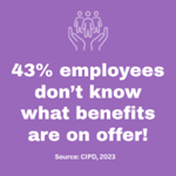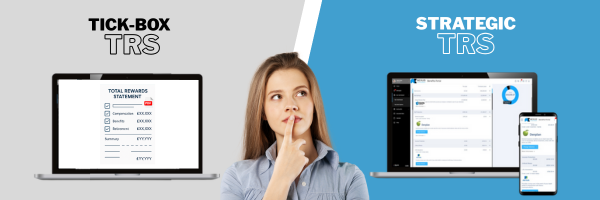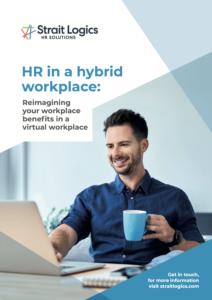
Many HR leaders think they’re already offering a Total Rewards Statement (TRS). After all, their HRIS platform includes a TRS module. A quick report, some figures, and a PDF download – job done.
But if you’ve ever had that sinking feeling that employees aren’t engaging with it… you’re not alone.
In fact, more often than not, TRS tools are treated as bolt-on features – not as meaningful systems in their own right. And that’s where things start to fall short.
In this blog, we’ll explore why a “tick-box” TRS isn’t enough, what a true TRS system should offer, the difference between built-in modules and dedicated platforms, and how HR teams can use TRS more strategically to support engagement, retention, and reward transparency.
What HR Professionals “Think” TRS is
If your current HR system includes a TRS module, it likely provides a snapshot of employee pay, pensions, and benefits – a one-page report, emailed or downloaded once a year. On the surface, it does the job.
But the reality is, most employees won’t even remember receiving it. 
Why?
These statements are often generic, visually underwhelming, and difficult to interpret. They’re also delivered as a one-off with no real context or follow-up. It’s no wonder they fail to make an impact.
And the data backs this up.
A recent CIPD survey found that just 38% of employees say their employer explains “why” they’re paid what they are. Only 20% say their organisation communicates what they need to do to earn more.
When it comes to benefits:
– 57% have been told what benefits are on offer
– 53% know how to access them
– 50% say they understand how the benefits could actually help
– Just 43% have had the “why” behind the benefits explained to them
That’s a major communication gap – and one that Total Reward Statements are meant to help close.

TRS Should be a Communication Tool – Not Just a Report
A tick-box TRS shows numbers. A strategic TRS tells a story. There’s a world of difference between sending employees a pay summary and actually communicating the value of their rewards package.
Used well, a TRS can go far beyond numbers. It can explain the “why” behind your benefits strategy, reinforce your company’s investment in its people. It also highlights the total value of employment in a way that supports your wider HR goals – from retention to wellbeing.
This is only achievable when a TRS is built with engagement in mind – not just data accuracy.
It’s easy to underestimate just how important it is for employees to feel genuinely engaged with their reward package – and there’s no better way to achieve that than through clear, consistent communication. To learn more about how communication supports engagement, particularly in the context of flexible benefits, we explored this further in a previous blog, “Future-proofing your workplace through flexibility: the true value of flexible benefits”
Where Plug-In TRS Modules Fall Short
Most HR platforms weren’t built to deliver Total Reward Statements. Instead, they add TRS in later – either through basic templates or limited modules.
In practice, that can mean you’re stuck with layouts you can’t customise, statements that can’t be personalised, and no way to target messaging by audience. Some systems allow basic banding, but very few offer the flexibility to tailor content to different roles, grades, or locations.
If you’ve ever tried to use your HRIS to build a reward narrative, you’ll know how frustrating that can be. You end up working around the tool, rather than with it.
What a Purpose-Built TRS System Looks Like
A dedicated TRS system is different. It’s designed with employee communication at its heart – not just data visibility.
That means you can:
– Build multi-page, personalised statements that reflect your brand and people
– Add custom content, such as explainer sections, videos, or benefits guides
– Target messaging to different audiences (by business area, role, geography)
– Track engagement, helping you improve year on year
In other words, it’s not just a report – it’s a communication channel.
It’s also an opportunity to proactively manage your reward narrative. Instead of reacting to questions or assumptions, you’re shaping understanding from the start.
Why it Matters Now More Than Ever
In 2025, employees expect transparency.
They want to understand the full value of what they’re getting – especially as organisations face tighter pay budgets and increased competition for talent.
When pay rises are modest, benefits are growing in complexity, and hybrid working is changing how people connect with the organisation, clear and meaningful reward communication becomes even more important.
A strong TRS helps bridge the gap between perception and reality. It ensures employees feel informed, valued, and recognised, even when base salary isn’t increasing dramatically.
When the role of TRS in personalisation is explored, today’s workforce expects more than a generic experience. If your HR portal looks like everyone else’s…that could be a problem.
So… Do you Need a New TRS?
If you’re wondering whether your current TRS setup is doing the job, here are a few questions to ask yourself:
– Are employees actually engaging with the statements?
– Does the design reflect your employer brand?
– Can you personalise messaging across different employee groups?
– Is it helping you meet wider goals like retention or wellbeing?
– Do you control the content – or are you stuck with a template?
If the answer to most of these is “no”, it may be time to rethink your approach.
Final Thought: It’s Not About “Having” a TRS – It’s About Using it Well
Total Reward Statements shouldn’t be something you send and forget. Used properly, they’re one of the most powerful tools in your HR toolkit – driving engagement, reinforcing value, and helping employees truly understand the benefits of staying with you. Whether you choose to build your own, adapt an existing tool, or look for a dedicated system – the key is to treat TRS as a strategic asset, not a tick-box exercise.
The difference isn’t in what it shows. It’s in how it connects.
Want to explore what a better TRS experience could look like? Let’s have a conversation.

